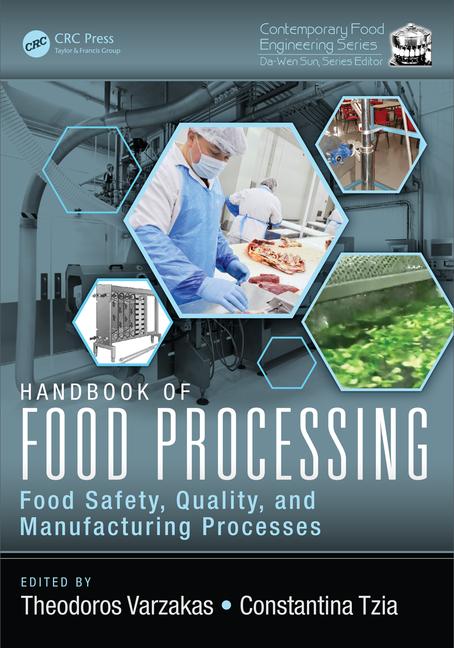Case Study: Texas bakery improves sanitation with dry ice blasting

A Texas bakery was seeking a solution to its cleaning problem. It previously was utilizing the traditional cleaning method of pressure washing and manual hand washing. These methods proved laborious, time consuming and produced too many negative side effects, including secondary wastewater. The bakery implemented a dry ice cleaning system into their plant. The system dramatically reduced the amount of people and time required to clean the equipment by hand. The bakery was able to recoup 24-30 hours per person, which can be allocated to other cleaning and maintenance projects.
In the company’s 125,000 square foot baking facility, there are many things for its quality assurance (QA) manager to worry about; from general maintenance and equipment repair to shelf life and product contamination.
The plant used a combination of traditional cleaning methods, such as pressure washing and detailed hand washing. The process was extremely labor intensive. The same scenario repeated itself when the company would have to clean other areas of the plant, such as the bread proofer and baggers, which required at least two hours of set-up time to wrap the electrical components.
 The mile long bread cooler, which moves the baked goods from the oven for cooling and packing, was cleaned regularly by hand. Because of the plant’s constant operation, the conveyor and surrounding equipment were coated with layers of mineral oils and bread crumbs that had accumulated over time. In fact, the proofer’s half-mile long drive chain had to be replaced because of the build-up and the lack of an effective cleaning process to remove it.
The mile long bread cooler, which moves the baked goods from the oven for cooling and packing, was cleaned regularly by hand. Because of the plant’s constant operation, the conveyor and surrounding equipment were coated with layers of mineral oils and bread crumbs that had accumulated over time. In fact, the proofer’s half-mile long drive chain had to be replaced because of the build-up and the lack of an effective cleaning process to remove it.
Recently, the cleaning crew performed a deep cleaning of the cooler, which took 25 people more than 10 hours to clean the entire length of the conveyer. Since then, regular pressure and hand washing, conducted by 5 laborers working 8-10 hour shifts, has helped keep the surface of the stainless steel pins and rollers, the guides and the wear strips clean. Unfortunately, the general maintenance does not clean deep enough to completely remove the layers of residue from the other parts of the cooler, proofer, grids, baggers and floors. In addition, the pressure washing and manual wiping removes important mineral oils from the conveyor which must be reapplied following the cleaning to ensure the conveyor is properly lubricated—a process which adds at least two hours of downtime.
The use of the pressure washer also required the company to wrap all electrical components prior to cleaning and then designate a few crew members to collect the water. The crew must remove all secondary wastewater and ensure that the equipment is completely dry before the parts can be reassembled and production could begin again.
“No matter how hard you try, water gets everywhere, and even after trying to remove the water, moisture remains,” said the QA manager. “In a baking environment, we are highly concerned about the long-term quality and shelf life of our products. Where there is moisture or build-up, there is a greater chance of a biological growing.”
Encouraged by the effectiveness of the dry ice cleaning system at two sister plants, the quality assurance manager brought in a machine for testing.
Dry ice cleaning systems uses non-abrasive media in the form of recycled CO2 pellets that won’t damage surfaces or equipment. The combination of dry ice cleaning’s kinetic energy and thermal effects break the connection between the dirt and the surface, lifting away contaminants. Unlike power washing or steam cleaning, dry ice cleaning does not leave any secondary waste, as the dry ice pellets or particles sublimate—convert from solid to gas—upon impact. Dry ice cleaning is also safe and non-toxic, does not create downstream contamination and reduces or eliminates employee exposure to dangerous chemical cleaning agents.
Since implementing a dry ice cleaning system, the Texas bakery has seen an immediate return on investment. Cleaning the bread cooler and mile long conveyor now takes two people less than six hours. Facility managers noted that they were also able to reduce their staffing in the sanitation department while the remaining crew is now able to focus on areas of the plant that the company hadn’t been able to clean previously. They estimated that by reducing the amount of people and time required to clean the equipment by hand, they were able to recoup 24-30 hours per person per week that can be allocated to other cleaning and maintenance projects.
The cleaning process is soft enough that it doesn’t peel paint, impinge electrical conduit, damage the laser and infrared photo eyes used in production, or remove the mineral oils on the conveyor, yet is powerful enough to remove several years of built-up residue from production line machines.
The QA manager commented, “We simply did not have downtime to clean some pieces of equipment to our standards, but because of the speed and effectiveness of the dry ice system, we now have the time and resources to attend to a variety of other areas of the plant. Much of the equipment in a high-speed baking plant is simply not designed to be cleaned easily. With the dry ice system, we are cleaning things that I have never seen cleaned in the decade I have been in the industry. In fact, when I tell engineers what we are cleaning with dry ice, they are truly surprised.”
With the dry ice system, the plant does not have to worry about water residue anymore. Crew members no longer have to bag the electrical components, and they have also reduced the possibility of harmful biologicals. The QA manager noted, “We do significant testing to determine how clean our equipment is after cleaning, and with dry ice cleaning, we are able to do more than simply removing debris. We are actually sanitizing our machines, which will have a positive impact on the long-term quality of our products and the life of our equipment.”
While the Texas bakery team is still learning about what can be cleaned with dry ice cleaning, the system is allowing the company to clean deeper than it has ever done in the past while reducing maintenance time and costs and improving productivity.
About Cold Jet
Cold Jet is a global expert in environmentally sustainable cleaning, surface preparation and transport cooling solutions. Its dry ice blast-cleaning systems are designed to meet every unique cleaning application. Cold Jet’s engineering, R&D and production operations are maintained at its world headquarters in Loveland, OH. A 14,600-square-foot, high-tech machining and manufacturing facility is located in Milford, OH. The company also has assembly and manufacturing facilities in Denmark and Poland for its IceTech line of dry ice cleaning and production equipment. Its Cold Jet BVBA office is located in Zellik, Belgium, offering direct sales and support offices in Canada, Mexico, Germany, Denmark, France, Spain, Poland, Japan, China and the Middle East.
Looking for a reprint of this article?
From high-res PDFs to custom plaques, order your copy today!








